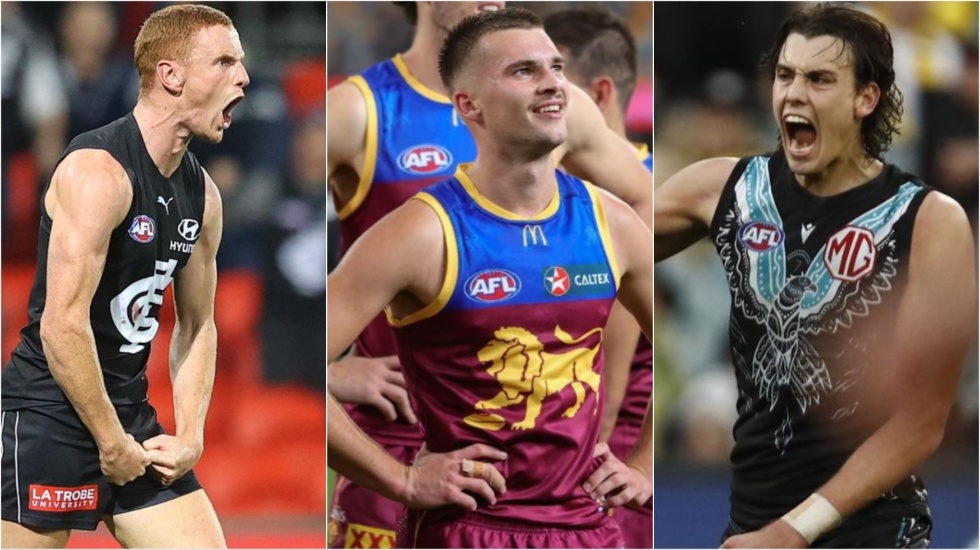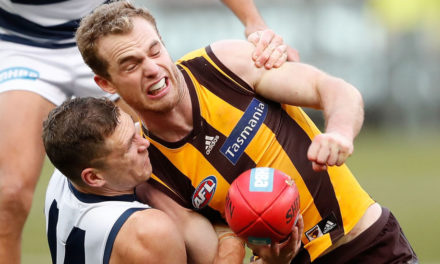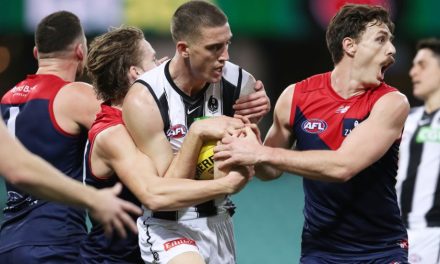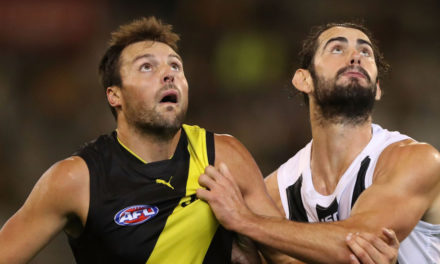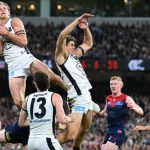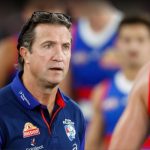Low profile but valuable parts of their teams’ finals push (from left): Matt Cottrell, Darcy Wilmot, Ollie Lord.
Esteemed former strategy and personnel guru Chris Pelchen employed a simple but fundamental core philosophy when he helped build premiership lists at Port Adelaide and then Hawthorn.
Using a meticulously designed ranking system, he rated all league players somewhere between one (at the elite end) and five (at the other). When cleaning up a list, individual decisions were based primarily on this assessment.
Everyone wants a list full of elite players, but restrictions on salary cap spending makes this impossible. Success comes when players ranked three (your foot soldiers) or 4A (young players beginning their career) play like ones.
Pelchen realised this, and as such placed a big emphasis on character and on-field intelligence, whilst spurning the oft-repeated “best available” approach to drafting.
The success is evident.
All teams who play finals boast a good smattering of the elite. The talent gaps are smaller in these matches. This means that we enjoy a higher standard of footy in the emerging warmth of September, but it also means that victories claimed off pure ability are few and far between. You need your threes and fours playing like ones to win finals.
Hawthorn’s Norm Smith medallists through the 2008-2015 years were all top-liners, but do they pull off the steal of the century against Geelong without a career-best outing from Xavier Ellis?
In 2014, franking their greatness with back-to-back flags, the Hawks lauded 19-gamer Will Langford, who posted 29 disposals, 10 clearances and a goal as they narrowly edged Port Adelaide in the preliminary final, before backing it up with 21 touches and three goals the following week.
Reputations are made in finals. More than a few were enhanced this week, although it may not have been the names we were expecting.
A popular rhetoric in the lead-up to Thursday night’s qualifying final was that Collingwood required a mammoth performance from Jordan De Goey to match the Demons in the middle.
De Goey made a contribution, but 19 disposals is well below his season average. Meanwhile, perennial role player and occasional whipping boy Will Hoskin-Elliott produced season-high numbers with 20 disposals, 10 rebound 50s and eight intercept possessions.
When the teams dropped with a bang on Wednesday night, Hoskin-Elliott’s position was perhaps debatable. And yet, given Melbourne’s utter dominance in terms of territory and inside 50s, it’s not a huge stretch to say that the Magpies would have lost that match without his ability to win the ball back in defence. ‘Undroppable’ doesn’t even begin to cover it.
On the other side, Melbourne’s best players consisted of Max Gawn, Christian Petracca and Clayton Oliver. They play like that every week. Few Demons, if any, played above their station.
No club epitomises this model more than Greater Western Sydney has its short, but storied, history. Through repeated and deep runs into the finals under former coach Leon Cameron, the Giants’ plethora of stars would generally do their bit, it’s just that they lacked the edge offered by difference-making role players.
PLEASE HELP US CONTINUE TO THRIVE BY BECOMING AN OFFICIAL FOOTYOLOGY PATRON. JUST CLICK THIS LINK.
Captain Toby Greene raised eyebrows on the weekend when he suggested that the side was getting it done despite talent, telling the host broadcaster that the current crop is “probably the least talented side I’ve played in that’s played in finals, but it’s probably the side I’ve got the most trust in to perform.”
Far from being an insult, Greene was praising the even contribution that the Giants now enjoy, and the fact that their so-called “bottom six” are offering outstanding performances on a regular basis.
More than anyone else, it’s his compatriots in the small forward faction that embody this the most. Everyone saw on Saturday why the Giants were so keen to ensure Toby Bedford’s suspension was dismissed, and Brent Daniels edges closer to being an elite player by the week.
On forwards, Joe Daniher was the only tall target of renown to make a big impact in week one. In fact, Daniher and Charlie Curnow are the only key forwards from the top 10 of this year’s Coleman Medal to feature in September.
If it’s going to be an individual goalkicking display that gets it done in the next few weeks, it might be someone like Ollie Lord, the young Port Adelaide forward who kicked the Power’s first three goals on Saturday. He is probably fourth in line in his position at Port. But he kept them in it on the weekend.
Perhaps even better than having your threes play like ones is having your 4As (younger inexperienced players under Pelchen’s model) like Lord meet the challenge in a big final.
For Brisbane, it was the performances of youngsters Jaspa Fletcher and Darcy Wilmot that gave it an edge over its opponent. Coach Chris Fagan would have been expecting a solid contribution from the impressive duo, but no one, in-house or opposition, planned for three goals from Fletcher, while Wilmot was damaging at half-back and led the match for marks.
Then there’s Matt Cottrell. Carlton’s stars didn’t totally fire on Friday night, with Curnow subdued by Tom McCartin, and Patrick Cripps attended to by Callum Mills.
We know how Harry McKay’s night went.
But when the Blues were firing in the first half, Cottrell was in everything from defence to attack. It was his first ever final, and it was his best ever game.
It’s taken the majority of Carlton fans a long time to accept Cottrell as a locked-in part of their best team. On the train home after their win against the Swans, he was unquestionably the toast of the town.
So, who will it be this week? And the week after that? And the week after that? Grand finals are littered with examples of foot soldiers or kids who play like top-liners on the day, unbalance the talent stakes, and help their team win. As the finals series rolls on, the lesser lights have the opportunity to burn brightest.

